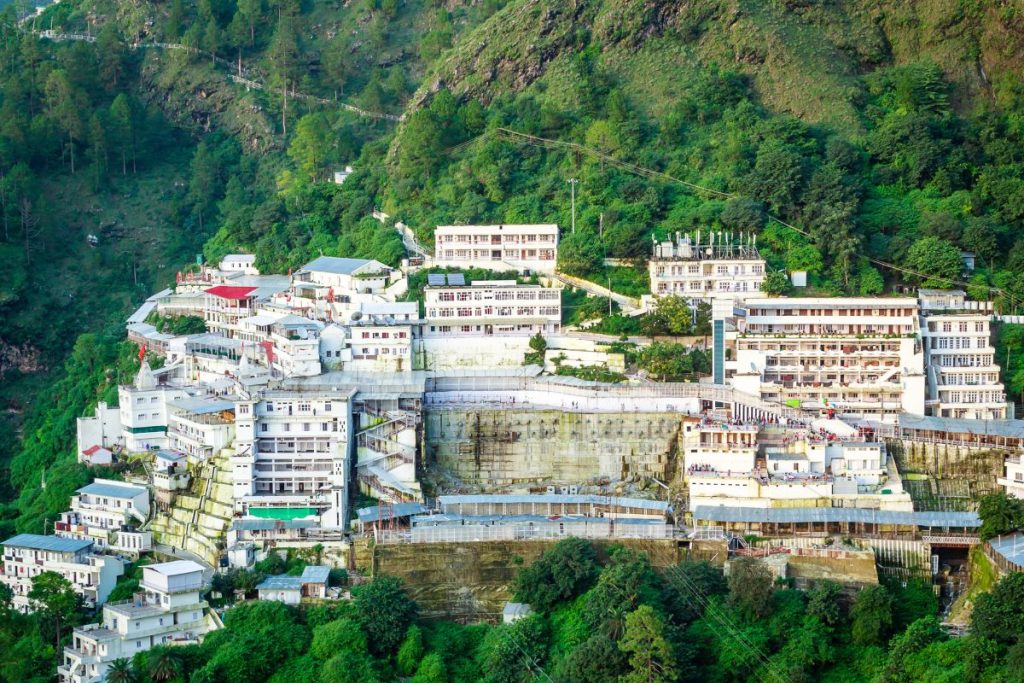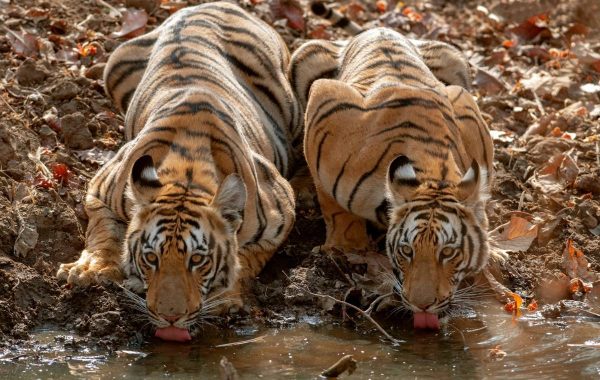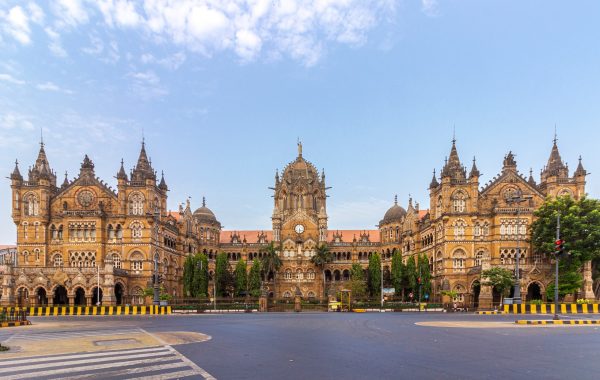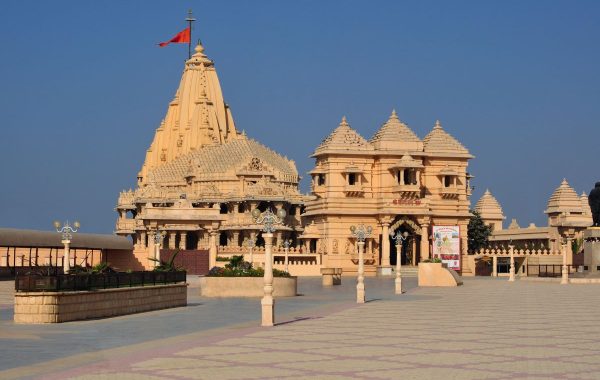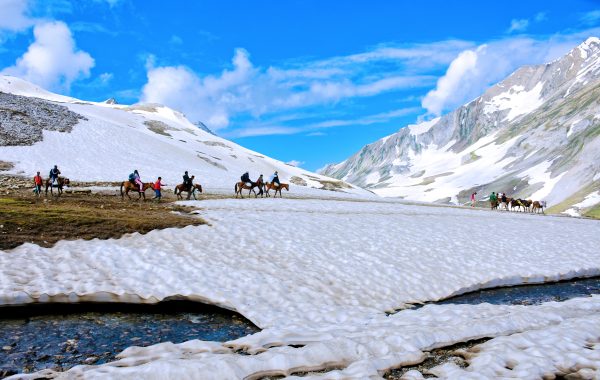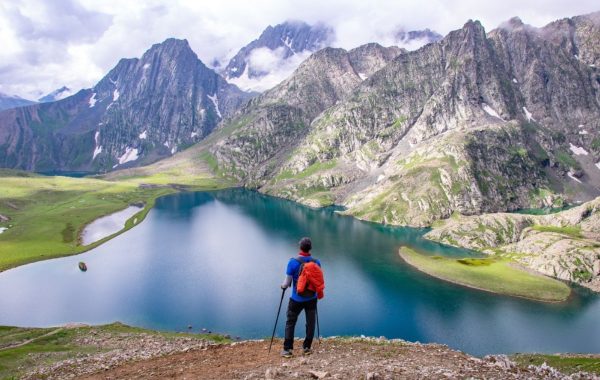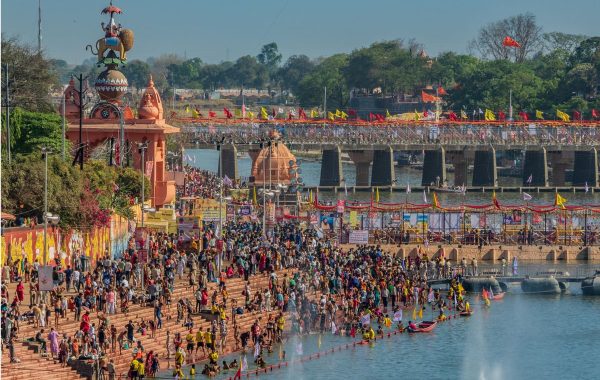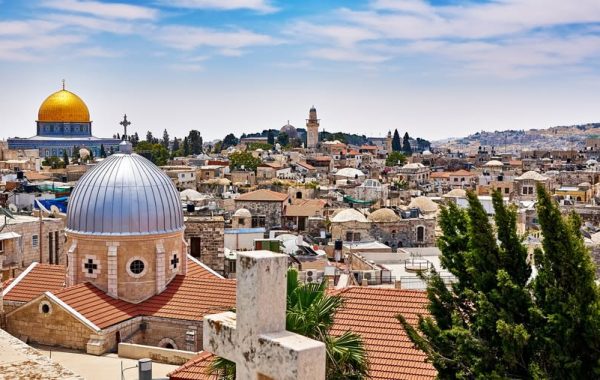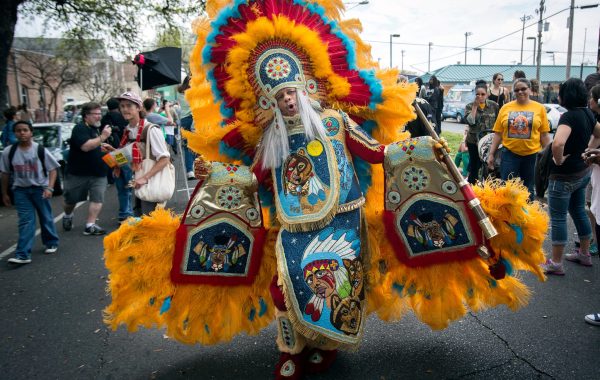Embark on a divine journey with our complete travel guide to the Vaishno Devi Yatra, offering essential tips, spiritual insights, and practical advice to prepare you for a holy pilgrimage.
The Vaishno Devi Yatra, is not just a pilgrimage but a soulful journey towards divine enlightenment. Embarking on this path is not merely a test of physical endurance but also a spiritual exploration, where each step resonates with age-old tales of devotion and the echoing chants of the Goddess’s blessings. It’s a transformative experience, transcending mere religious boundaries, and instilling in the traveler a profound sense of inner peace and divine connection.
Legends and History
Located in the scenic Trikuta mountains, the Vaishno Devi Temple stands 61 km from Jammu and is a beacon for thousands of devotees annually. Recognized as one of the holiest Hindu pilgrimage sites in north India, the temple, elevated at 5,200 ft, worships Goddess Shakti as: Maha Kali, Maha Saraswati, and Maha Lakshmi. The cave temple’s sanctum boasts three ‘pindis’ or stone symbols of these deities, each with distinct colors and textures originating from the same rock source.
Mythology attributes the temple’s creation to the Pandavas from Mahabharata, with Arjun meditating here, seeking divine intervention before the epic Kurukshetra war. Another tale recounts that over 700 years ago, Vaishno Devi, a devotee of Lord Vishnu, had decided to never get married but was pursued by another god named Bhairon Nath. During the chase, a spring emerged from an arrow she released to quench her thirst. This place, now known as Charan Paduka, has her foot imprints. After residing in the Ardhkanwari cave for nine months, when confronted by Bhairon Nath, she took on the avatar of Maha Kali form and beheaded him. The temple marks the place where his head landed. Another tale narrates Vaishno Devi’s early life as Trikuta, who, upon meeting Lord Rama, acknowledged him as her chosen husband. While he couldn’t reciprocate owing to his commitment to Sita, he was moved by her fervor, dubbing her Vaishnavi and foretelling their union in Kaliyuga. He then adviced her to meditate within a cave in the Trikuta mountains, bestowing upon her a bow and arrow, a lion, and a battalion of monkeys for her defense.
Must Read: Quintessential Srinagar And the Kashmir Valley | Travel and Food Guide
The Vaishno Devi Yatra
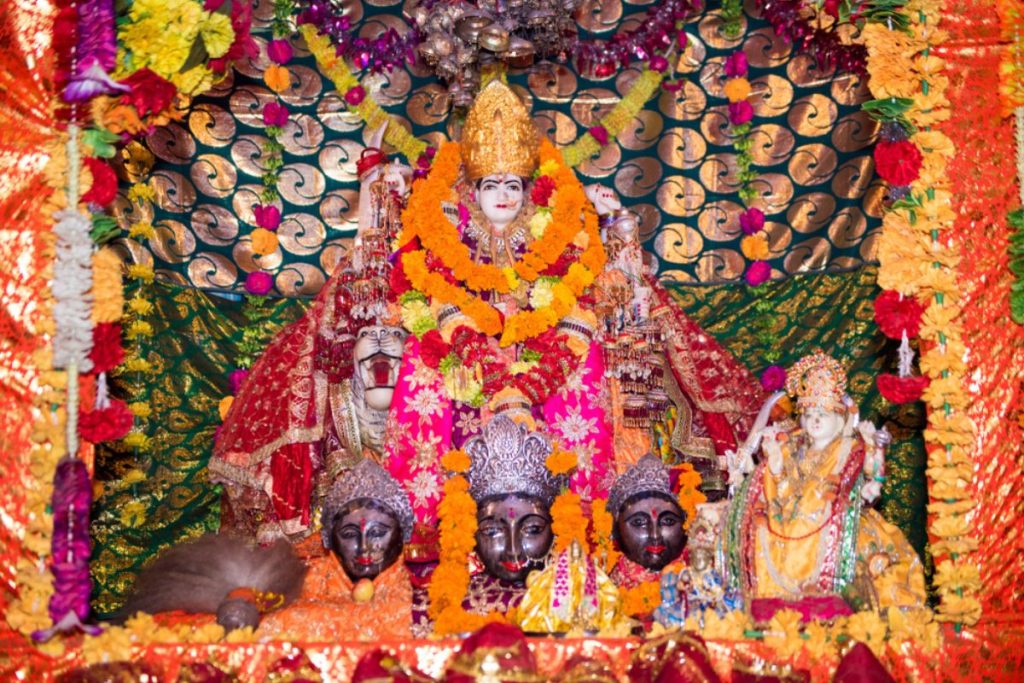
The Vaishno Devi pilgrimage requires a 12 km trek starting from the base camp in Katra, situated roughly 50 kms from Jammu. Even with the challenging trek, the shrine attracts over one crore devotees annually, especially during the Navratras. The pathway to Vaishno Devi is well-constructed with a mild incline, and the journey’s duration depends on weather conditions, crowd size, and one’s pace. Along the route, shops offer souvenirs and spiritual music, accompanied by scenic vistas. While there’s an option of stairs, which are shorter but steeper, notable landmarks on the path include Darshani Deodhi, Banganga, Chara Paduka, and up to Bhairon Mandir. The halfway mark is Adhkuari, leading to Sanji Chhat, a picturesque plateau with a helipad and rest area. The shrine is just a 2.5 km walk from here. Another less-trodden path, which doesn’t accommodate ponies, diverges from the main one just before reaching Adhkuari. Upon arriving at the shrine, one might wait, especially during peak seasons. Entrance into the inner sanctum is determined by the registration slip. The cave houses three natural rock formations, or pindies, submerged in water, now made accessible by a marble platform. The primary complex, known as the Bhawan, provides both free and rented accommodations, vegetarian eateries, a medical facility, and shops for religious offerings and keepsakes.
How to Reach
Katra, a quaint town, is the starting point for the Vaishno Devi pilgrimage and sits 50 kms from Jammu, which houses the closest airport and railway station. From Jammu, buses are an option at Rs 50 from both the railway station and the main bus terminal, while taxis are priced around Rs 1500.
The journey from Katra to Vaishno Devi spans 12 km along a well-constructed path. For those pressed for time or unable to trek, helicopter services from Katra to Sanjhhi Chhat are available, leaving just a 2.5 km walk to the shrine. Reservations for these flights can be made on the Mata Vaishno Devi Shrine Board’s official website. Additionally, ponies, porters, and palanquins can be hired for assistance.
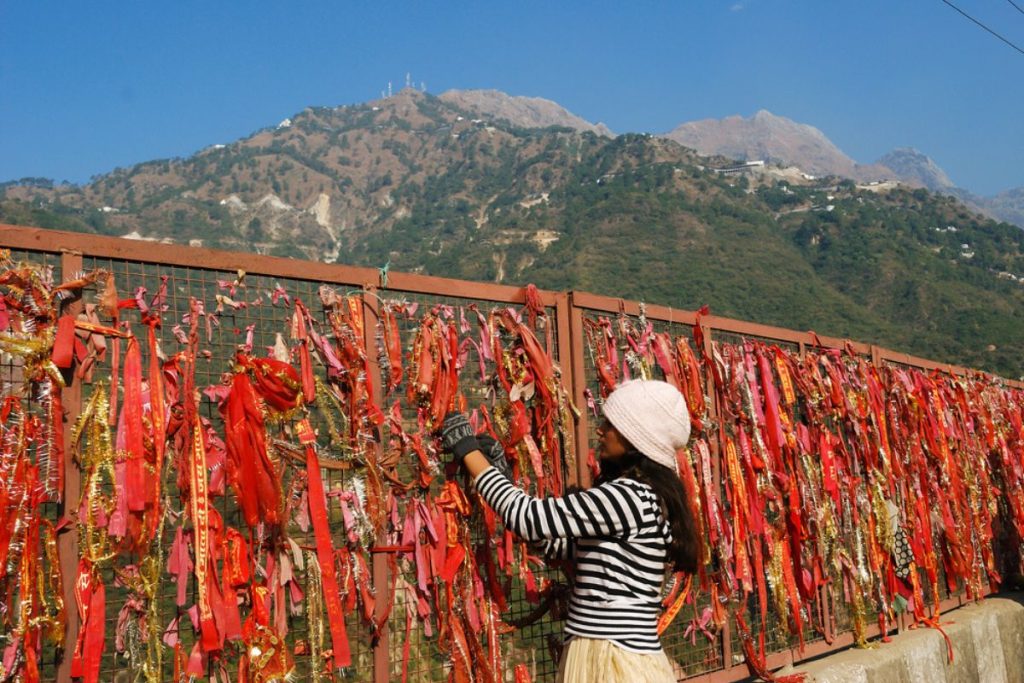
Best Time To Visit:
The ideal time for the trek is during the summer months of May-June, New Year, and the Navratra periods in March-April and September-October. Monsoons, from late July to early September, are best avoided due to slippery paths, while December and January are chilly, making a dawn start optimal.
Before embarking, pilgrims must register at Katra’s Yatra Registration Centres or on the Mata Vaishno Devi Shrine Board’s official website. The trek commences at the Banganga check post at the base; beyond this point, video cameras and electronics are prohibited. It’s recommended to trek lightly as essentials like food and water are available en route. Daily pilgrim numbers are usually capped but during peak seasons, when this is surpassed, waiting slips are distributed. For a seamless experience, online registration and wait-status checks are advised.
The Vaishno Devi Yatra isn’t just a trek but a spiritual journey that strengthens one’s faith and offers a sense of inner peace. It’s a testament to human perseverance and the undying faith of millions in the divine. Whether you’re drawn by faith, tradition, or simply the lure of trekking in a scenic landscape, the Yatra offers an enriching experience.
For latest travel news and updates, food and drink journeys, restaurant features, and more, like us on Facebook or follow us on Instagram. Read more on Travel and Food Network
Trending on TFN
A Spanish Odyssey: Trafalgar’s Unparalleled Best of Spain Itinerary
Imperial Splendors: Trafalgar’s 10-Day Sojourn in Prague, Vienna, and Budapest


